Bute Park Restoration and Development plan
Bute Park Restoration and Development plan (March 2005), describes the Pettigrew style (as far as could be interpreted in the context of the research carried to that date) [1]:
‘During the 1860s there had been a reaction against the formality of the High Victorian Italianate gardens such as those designed by William Nesfield (1793-1881), often consisting of gravels, architectural detailing and extensive parterres. The end of Nesfield’s career saw a dramatic reversion to the more informal and naturalistic designs previously promoted by William Sawrey Gilpin (1762-1843), John Loudon (1783-1843) and others, enriched with naturalistic planting advocated by horticulturalists. At Cardiff Castle it was this approach that was adopted by Andrew Pettigrew after 1871, creating a landscape for Burges’s Castle and rejecting the architect’s more formal vision for the surrounding grounds.
Swathes of uninterrupted, open lawn formed a dominant feature in the landscape, punctuated with irregularly shaped clumps of ornamental trees and shrubs. As Brent Elliott puts it, this was the English landscape style as improved by nineteenth century horticulture. Consequently, within the naturalised picturesque landscape much care was taken over the location, variety and quality of individual choice plants. A circuit of paths encouraged admiration of the specimen plant collection and encouraged viewing of the scenery created by the landscape as a whole, supplemented with eye-catching glimpses of Burges’s Gothic towers.
This description sums up the characteristics of Pettigrew’s layout of the Castle grounds. Herbaceous borders and seasonal planting were foiled by manicured turf between the planted areas and the edge of the driveways and footpaths within the estate. Although there were ornamental areas adjacent to the Castle, in the main the effect was one of understated elegance and tranquillity which did not compete with the exuberance of Burges’ Gothic architecture.’
More recently, some descriptive evidence of Pettigrew’s approach to landscape layout and planting has come to light through the scrapbook of his middle son Hugh – sourced via the Pettigrew family during the preparation of the Pettigrew Exhibition in the Old Library in Cardiff in Spring 2006. An article on ‘Hardy Herbaceous Perennial Plants, delivered by Andrew Pettigrew to the Cardiff Gardener’s Improvement Association makes strong reference to Frederick Law Olmsted, the famous American landscape architect, a contemporary of Pettigrew. In his article, Andrew Pettigrew extols the virtues of hardy herbaceous plants as a means of providing flowers throughout the year and many of the contemporary descriptions cite his use of herbaceous perennials with ornamental shrubs.
From contemporary descriptions of the Castle gardens during Pettigrew’s tenure as Head Gardener[2], we can derive the following characteristic features which have been translated into new planting designs, and should continue to inform further planting interventions to reflect his highly individual approach.
- Seasonal planting of Zonal Pelargonium in small, geometric beds
- High quality grass swards fronting all planted areas (visitor centre border)
- Choice shrubs planted, with trees, in long borders or circular island beds
- Extensive herbaceous borders with shrubs at the back (visitor centre border)
- Masses of flowering plants with muted tones (visitor centre border)
- Hydrangeas
It is interesting to note that in an undated article entitled ‘South Wales Notes’, again sourced from Hugh Pettigrew’s scrap book, Andrew Pettigrew indicates that many of the shrubs in the grounds were actually raised in the glass houses for interior floral display, then transplanted to the grounds after they had finished flowering. He cites the use of Hydrangea hortensia, Aralia sieboldii and Choisya ternata in this context.
[1] Bute Park Restoration and Development Plan, March 2005. Page 113.
[2] Journal of Horticultures and Cottage Gardener, 27 September 1877; The Gardener’s Chronicle, 1 July 1882; The Gardener’s Magazine, 8 August 1891; The Gardeners Chronicle, 9 September 1893; Journal of Horticultures and Cottage gardener, 19 September 1895; Gardener’s Magazine, 21 October 1899, Journal of Horticulture and Cottage Gardener, 6 September 1900








